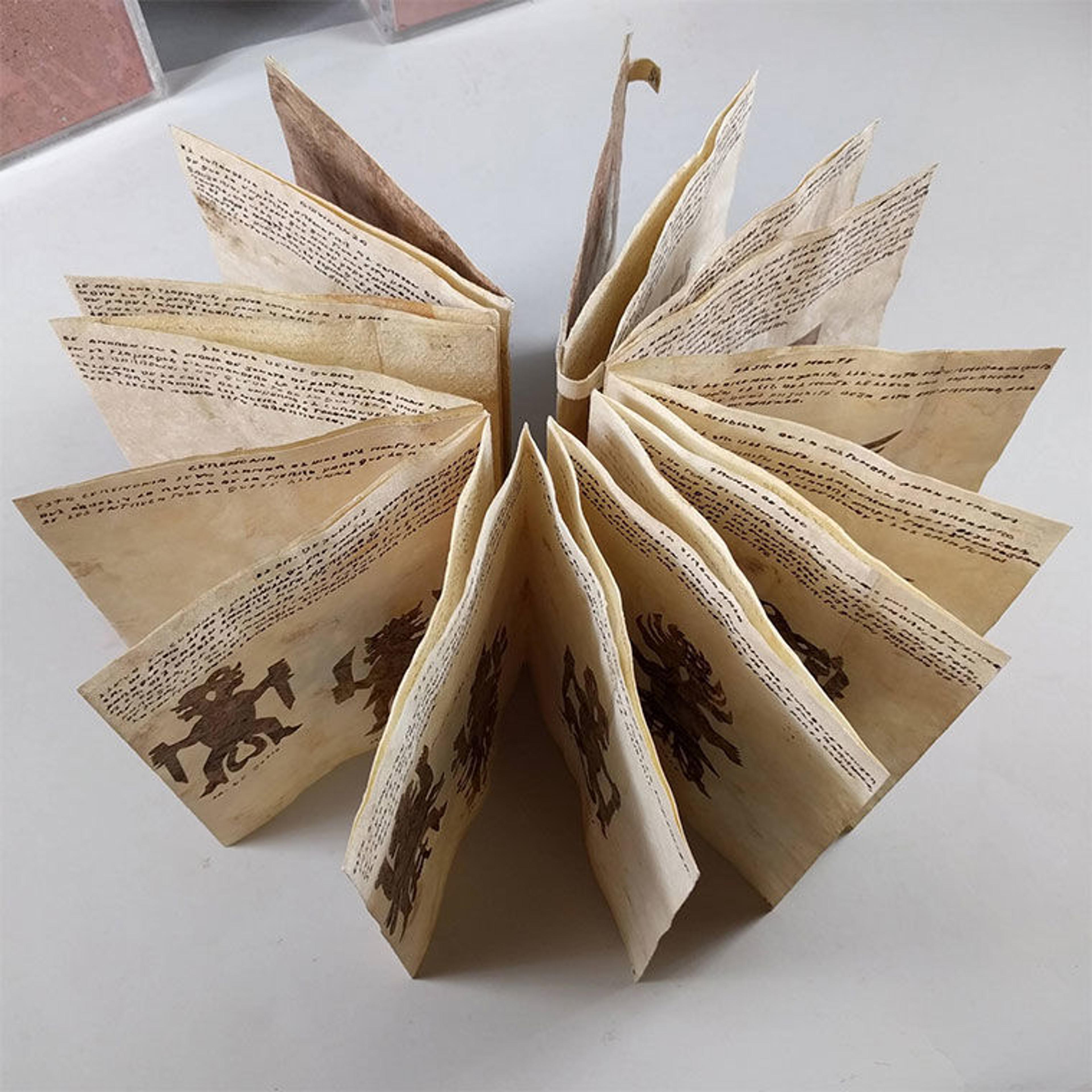
From top left: Alfonso Garcia Tellez's Tratamiento de una Ofrenda para Pedir la Lluvia en San Pablito Pahuatlán Pue[bla] ([Mexico]: Alfonso Garcia Tellez, 1975); Historia de la Curación de Antigua de San Pablito Pahuatlán Puebla ([Mexico]: Alfonso Garcia Tellez, [1978]); and Historia de un Brujo Nagual [de San Pablito Pahuatlan, Puebla, Mexico] ([Mexico]: Alfonso Garcia Tellez, 1976). All photos are of Watson Library's copies and are by the author unless otherwise noted.
Watson Library recently acquired three rare handmade bark paper (amate) books by Mexican artist Alfonso García Tellez. The books, conceived in the late 1970s, derive from a centuries-old Mesoamerican tradition of using amate figurines for spells, cures, witchcraft, and other rituals—in this case, by the indigenous Otomí people, from the villages around San Pablito, Puebla.
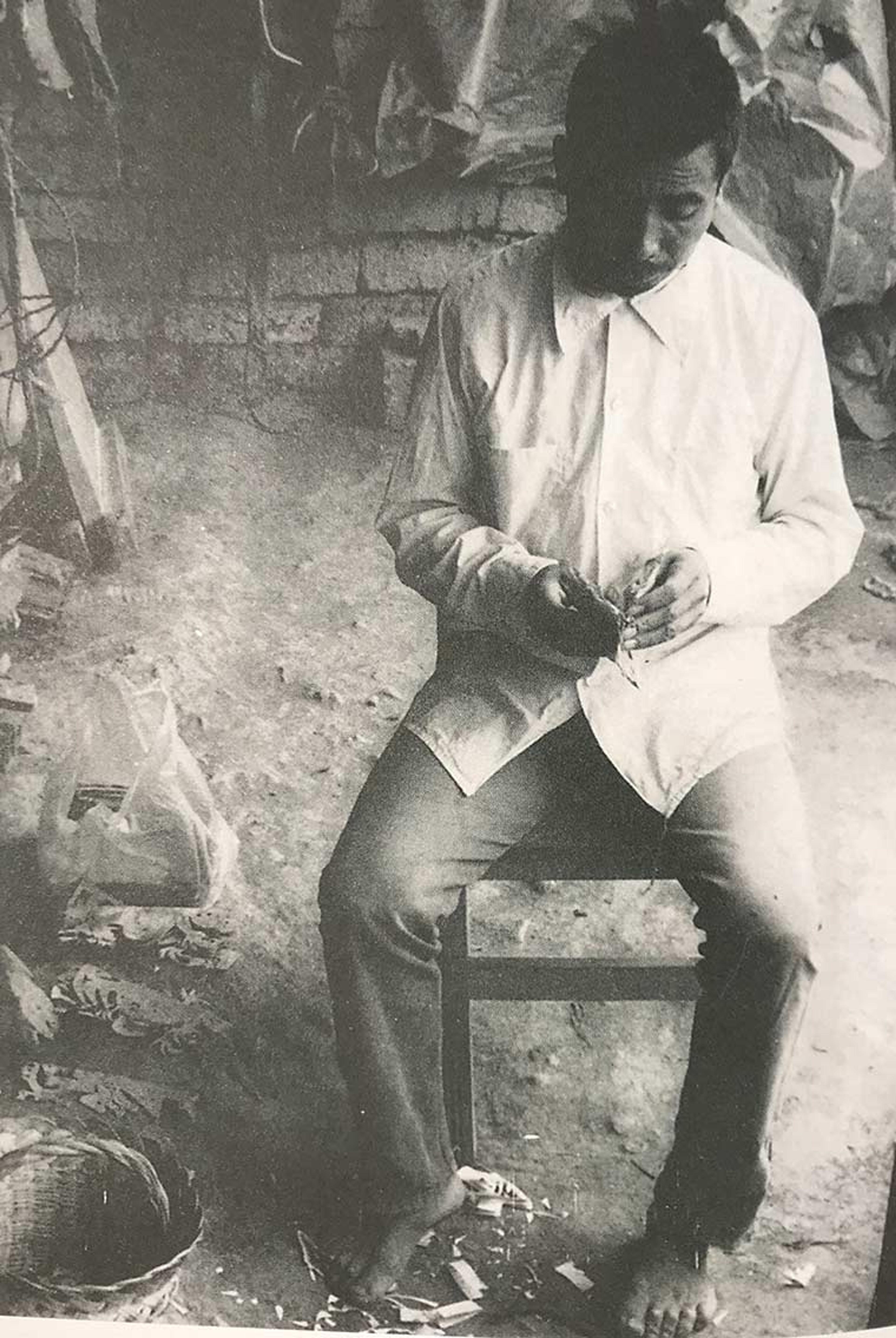
Garcia Tellez, cutting and arranging muñecos. Photo from: Geest van Papier (Leiden: Uitgeverij Compres, 2004)
García Tellez, who still lives and works in San Pablito, learned how to make and cut amate from his father, Santos García, the self-described "brujo mayor de San Pablito" (brujo is Spanish for witch). The brujos and brujas (also called curanderos, or curers) cut the paper—made from the inner bark of wild fig and mulberry trees—into muñecos (dolls) representing various spirit entities. Shamans and other religious specialists use the muñecos in rituals ranging from rainmaking to sorcery to curing illnesses.

From Alfonso Garcia Tellez's Historia de la Curación de Antigua de San Pablito Pahuatlán Puebla ([Mexico]: Alfonso Garcia Tellez, [1978])
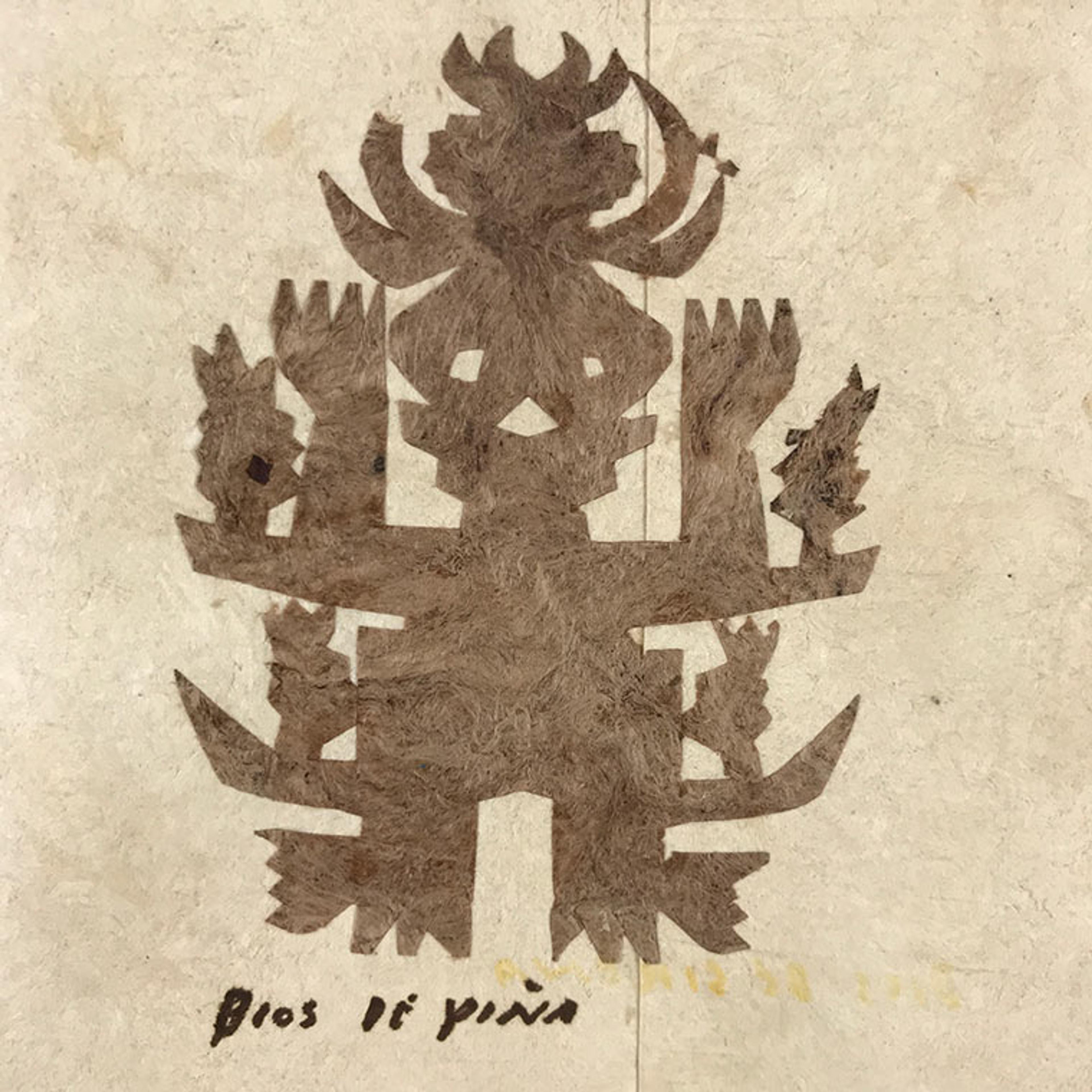
From Alfonso Garcia Tellez's Tratamiento de una Ofrenda para Pedir la Lluvia en San Pablito Pahuatlán Pue[bla] ([Mexico]: Alfonso Garcia Tellez, [1975])
In the late 1970s, Otomí artisans—including García Tellez—began making amate and muñecos to sell to tourists in the craft markets of Mexico. García Tellez is the most accomplished of just three Otomí artists to have produced bound books made from amate with muñecos pasted in. The books include handwritten descriptions, in Spanish, of the muñecos and the ceremonies in which they were used.
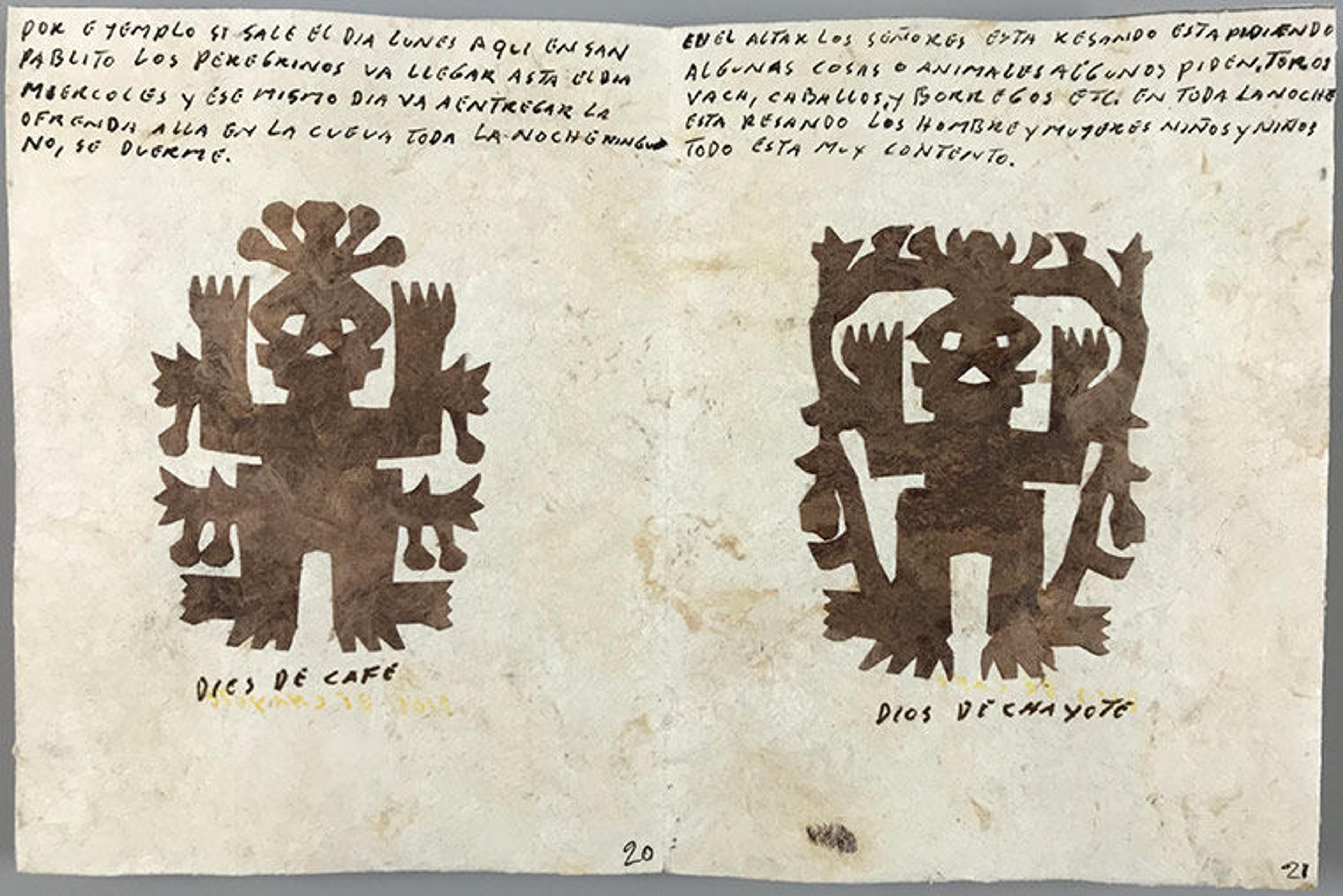
From Alfonso Garcia Tellez's Tratamiento de una Ofrenda para Pedir la Lluvia en San Pablito Pahuatlán Pue[bla] ([Mexico]: Alfonso Garcia Tellez, [1975])
García Tellez produced five different books of this type:
- Historia de la Curación de Antigua de San Pablito Pahuatlán Puebla (History of the Healing of the Ancestors of San Pablito Pahuatlán)
- Tratamiento de una Ofrenda para Pedir la Lluvia en San Pablito Pahuatlán Pue[bla] (A Ritual of an Offering to Ask for Rain in San Pablito Pahuatlán)
- Historia de una Vivienda para Hacer una Ofrenda al Santo Tecuil… (History of a Dwelling Requiring an Offering to Saint Tecuil…)
- Historia de un Brujo Nagual [de San Pablito Pahuatlan, Puebla, Mexico] (History of a Nagual Witch from San Pablito Pahuatlan)
- Istoria de Acquila de Sinbolo de San Pablito Pahuatlán Pue[bla] (History of the Eagle as a Symbol of San Pablito Pahuatlan)
In the late 1990s, García Tellez ceased production of Historia de un Brujo Nagual, eventually replacing it with Istoria de Acquila de Sinbolo.
Over nearly four decades and with the help of members of his family (namely his two wives and daughter), García Tellez made hundreds of copies of each book. However, no two copies are exactly alike—each copy is, by design, unique. Below are highlights from Watson Library's three volumes.
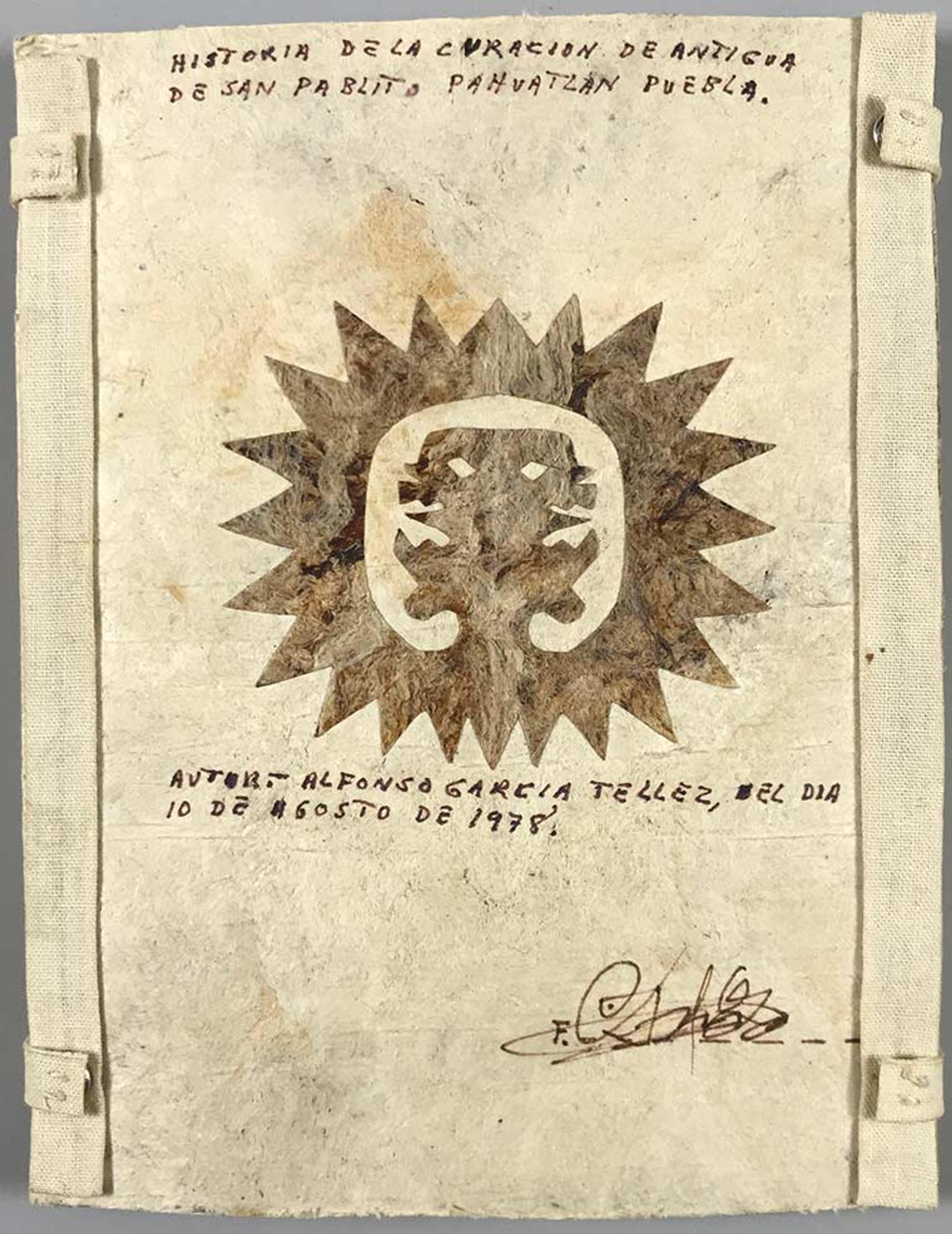
Front cover of Alfonso Garcia Tellez's Historia de la Curación de Antigua de San Pablito Pahuatlán Pue[bla] ([Mexico]: Alfonso Garcia Tellez, [1978])
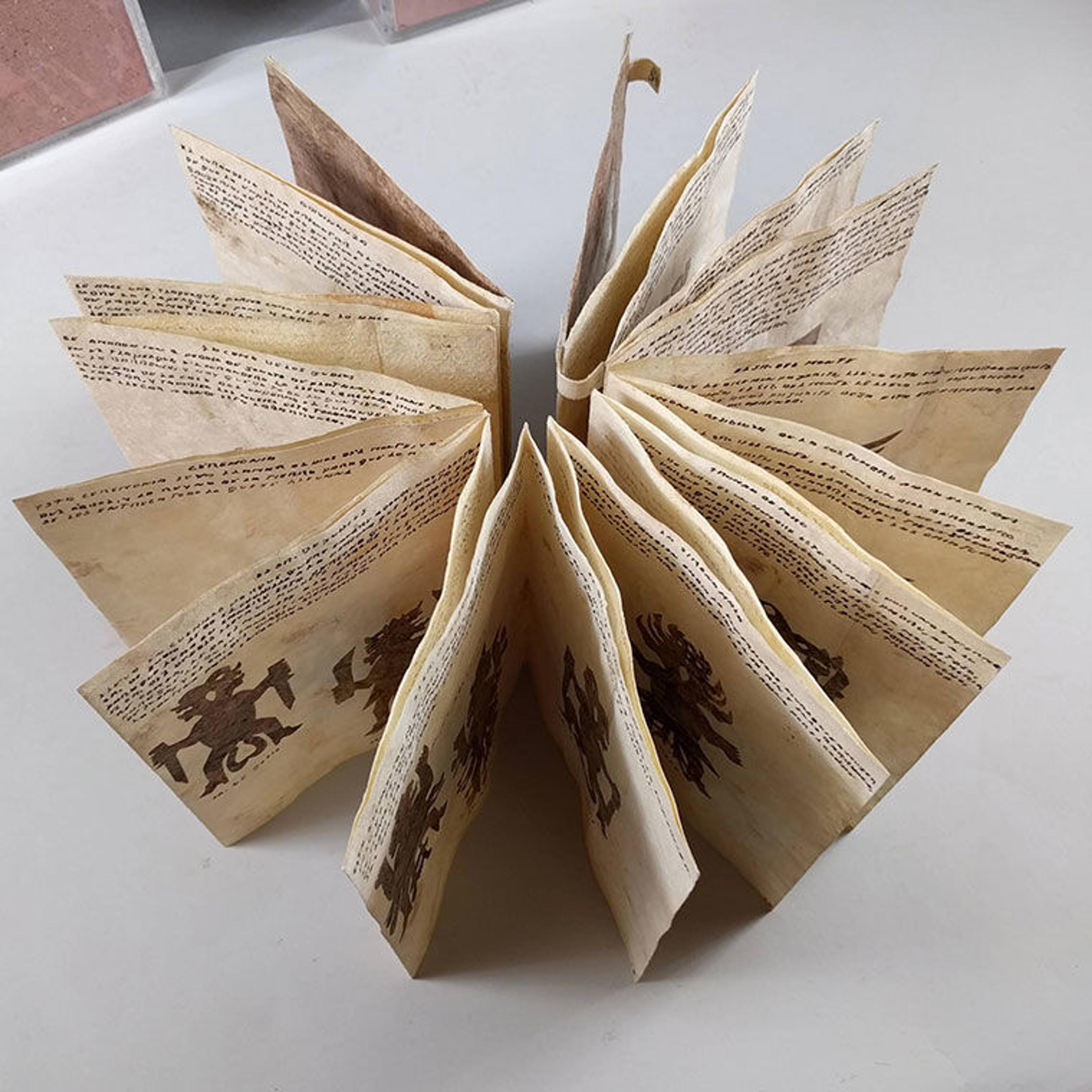
Foldout of Alfonso Garcia Tellez's Historia de la Curación de Antigua de San Pablito Pahuatlán Pue[bla] ([Mexico]: Alfonso Garcia Tellez, [1978]). Photo by Daisy Paul
Historia de la Curación de Antigua de San Pablito Pahuatlán Pue[bla] (History of the Healing of the Ancestors of San Pablito Pahuatlán) is a manual for mystical cures and healing, and includes muñecos from Otomí mythology, including the two wonderful bird spirits shown below. The perfect mirror imaging in the muñecos is the result of a long-established technique of folding pieces of amate in half then cutting them to the desired shapes, but García Tellez's muñecos are often much more complex than those of any of his predecessors or contemporaries.
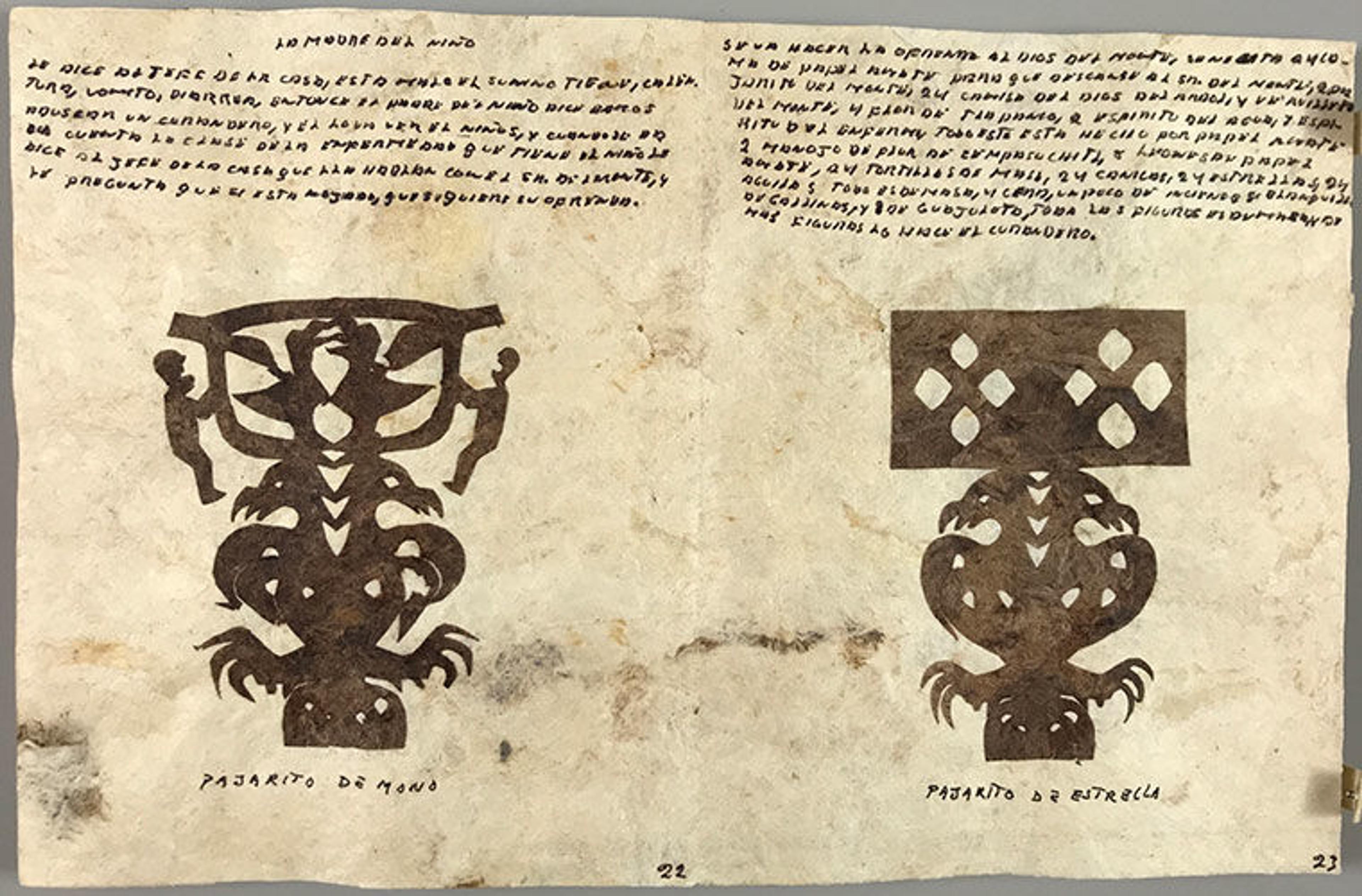
From Alfonso Garcia Tellez's Historia de la Curación de Antigua de San Pablito Pahuatlán Pue[bla] ([Mexico]: Alfonso Garcia Tellez, [1978])
The last few pages of Historia de la Curación describe rituals honoring Mother Earth mixed with Christian iconography—the depiction below of the birth of Christ is, to me, the most charming of the whole book.

From Alfonso Garcia Tellez's Historia de la Curación de Antigua de San Pablito Pahuatlán Pue[bla] ([Mexico]: Alfonso Garcia Tellez, [1978])
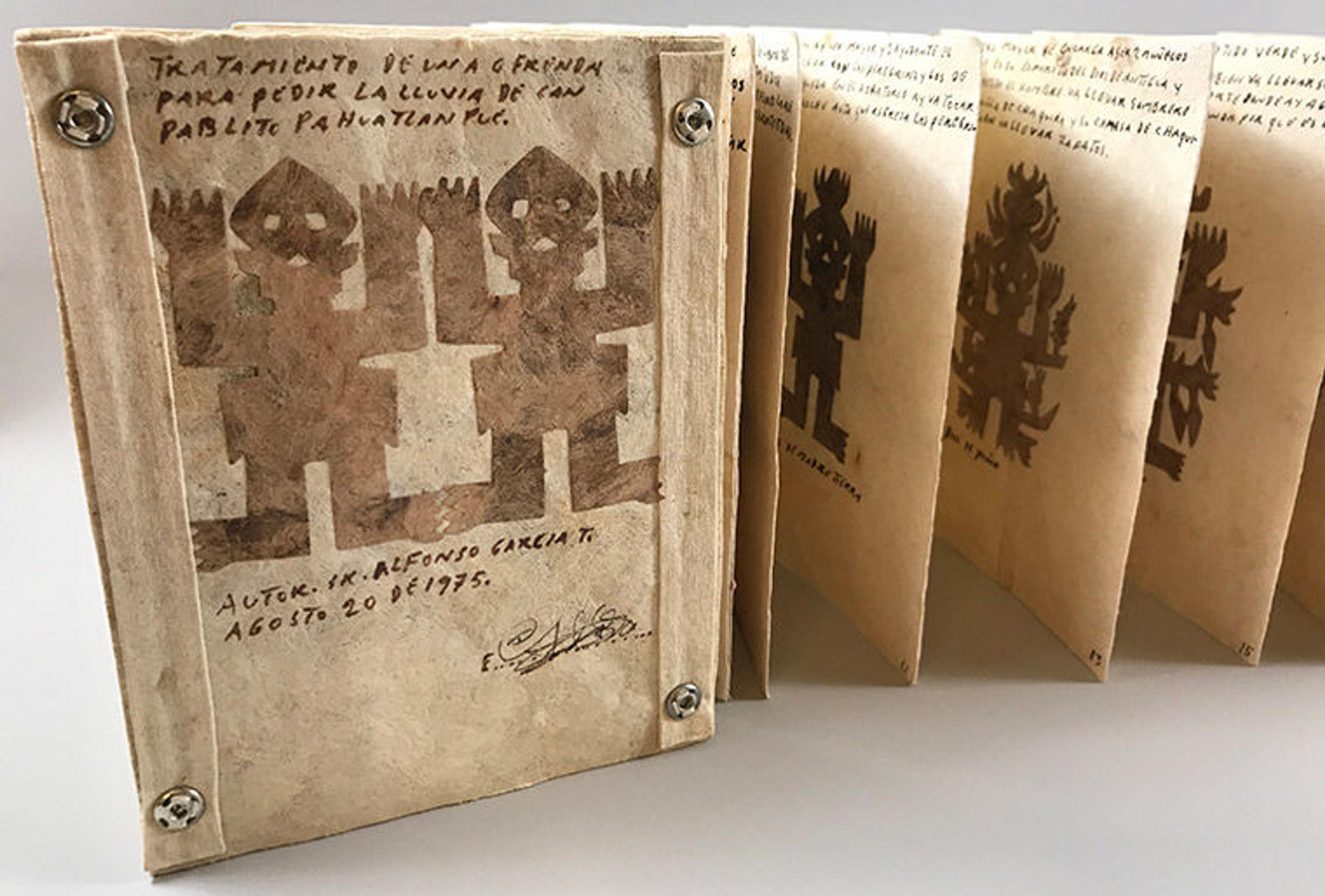
From Alfonso Garcia Tellez's Tratamiento de una Ofrenda para Pedir la Lluvia en San Pablito Pahuatlán Pue[bla] ([Mexico]: Alfonso Garcia Tellez, [1975])
Tratamiento de una Ofrenda para Pedir la Lluvia en San Pablito Pahuatlán Pue[bla] (A Ritual of an Offering to Ask for Rain in San Pablito Pahuatlán) includes muñecos primarily relating to crops, including the spirit for plantains depicted below (as well as the spirits for coffee and squash depicted further up on this page).
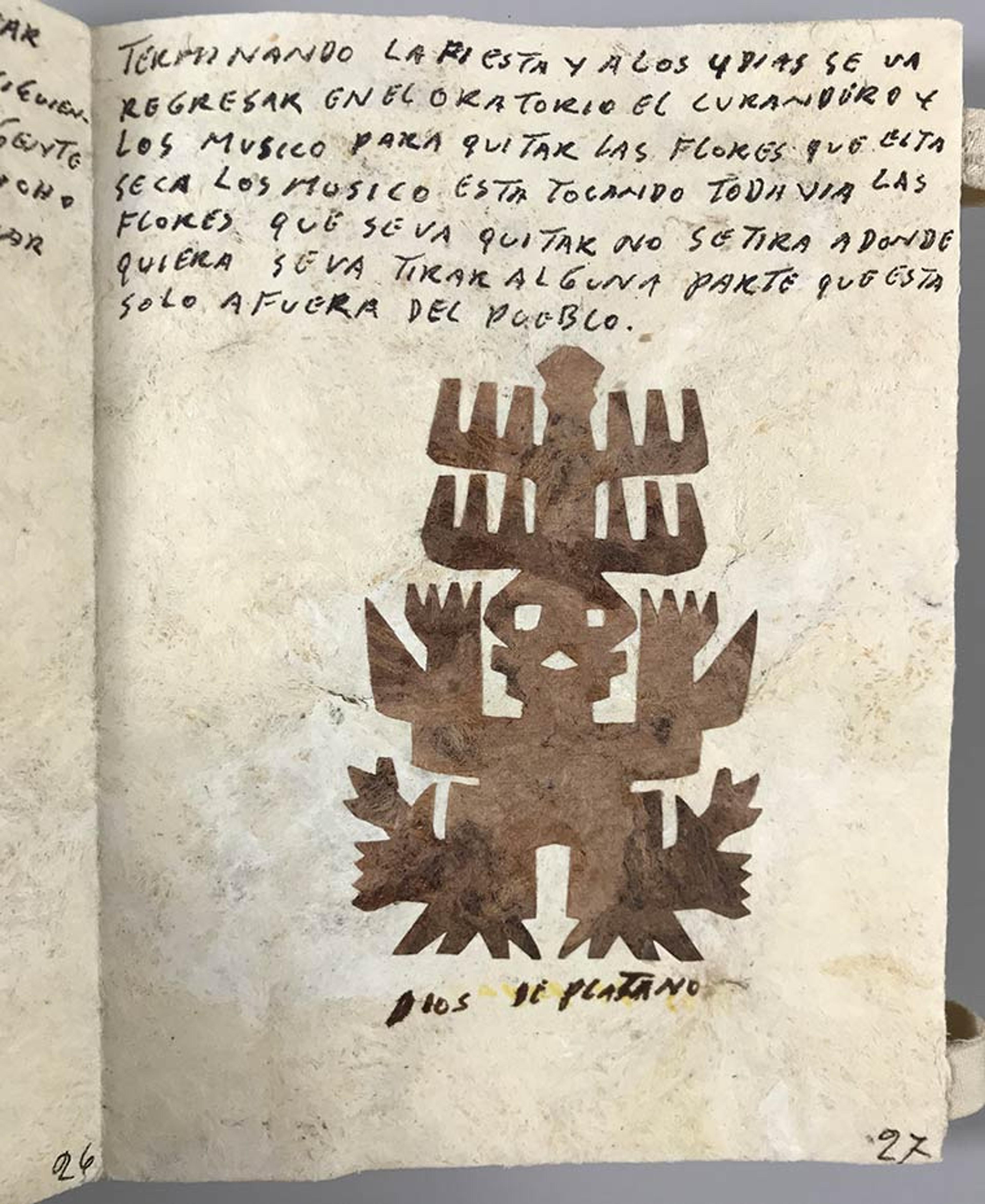
From Alfonso Garcia Tellez's Tratamiento de una Ofrenda para Pedir la Lluvia en San Pablito Pahuatlán Pue[bla] ([Mexico]: Alfonso Garcia Tellez, [1975])

Title page from Alfonso Garcia Tellez's Historia de un Brujo Nagual [de San Pablito Pahuatlan, Puebla, Mexico] ([Mexico]: Alfonso Garcia Tellez, [1976])
Historia de un Brujo Nagual [de San Pablito Pahuatlan, Puebla, Mexico] (History of a Nagual Witch from San Pablito Pahuatlan) is the story of a family seeking the help of a curandero to heal their child, who has been inflicted with sickness by a shapeshifting witch (shown above; note the ominous quote, "Quiero carne de Cristiano"!). Physically the book is quite different from our other two: it is wider than it is tall, is bound like a book rather than like an accordion, and reads more like a modern-day graphic novel. The two images below give you some sense of the book, but it really is something that needs to be experienced in person to get the full effect!
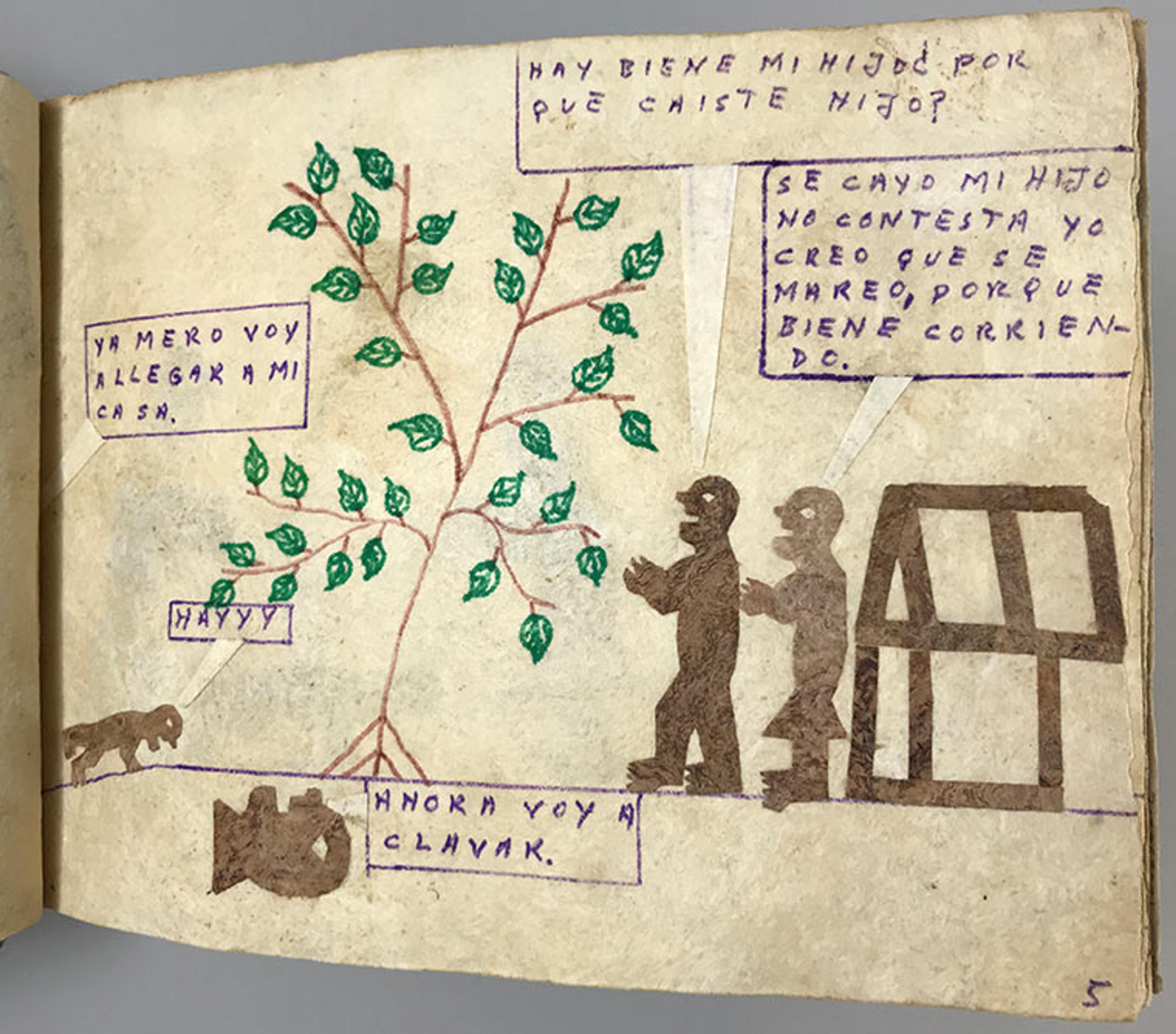
From Alfonso Garcia Tellez's Historia de un Brujo Nagual [de San Pablito Pahuatlan, Puebla, Mexico] ([Mexico]: Alfonso Garcia Tellez, [1976])

From Alfonso Garcia Tellez's Historia de un Brujo Nagual [de San Pablito Pahuatlan, Puebla, Mexico] ([Mexico]: Alfonso Garcia Tellez, [1976])
García Tellez's signature appears on the covers of all his manuscripts, as does the date the book was conceived (not to be confused with the date the book was produced, which is unknown). Our copies of Historia de la Curación and Tratamiento de una Ofrenda para Pedir la Lluvia also include strongly worded copyright statements at the back, roughly translating to:
It is forbidden to copy this book because it does not belong to everyone, only some healers can explain the content, that each ceremony has its meaning and that the healer who knows every aspect of these ceremonies is the author of this book.
This statement likely started appearing in García Tellez's books after inferior copies of them began showing up in the markets, most notably by fellow Otomí artisan Antonio López M. These forgeries are known as "The López Manuscripts."
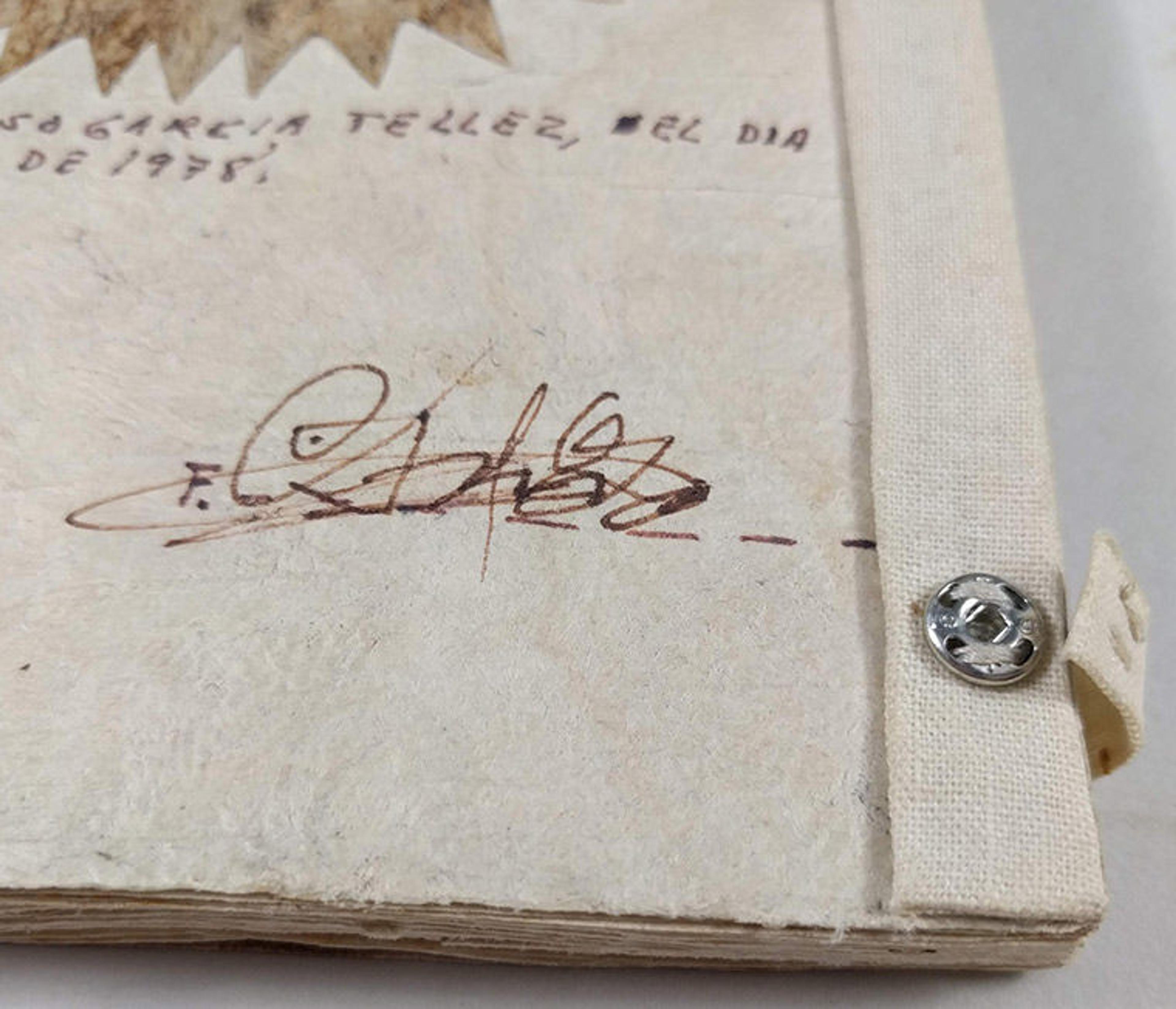
Tellez's signature. Photo by Daisy Paul
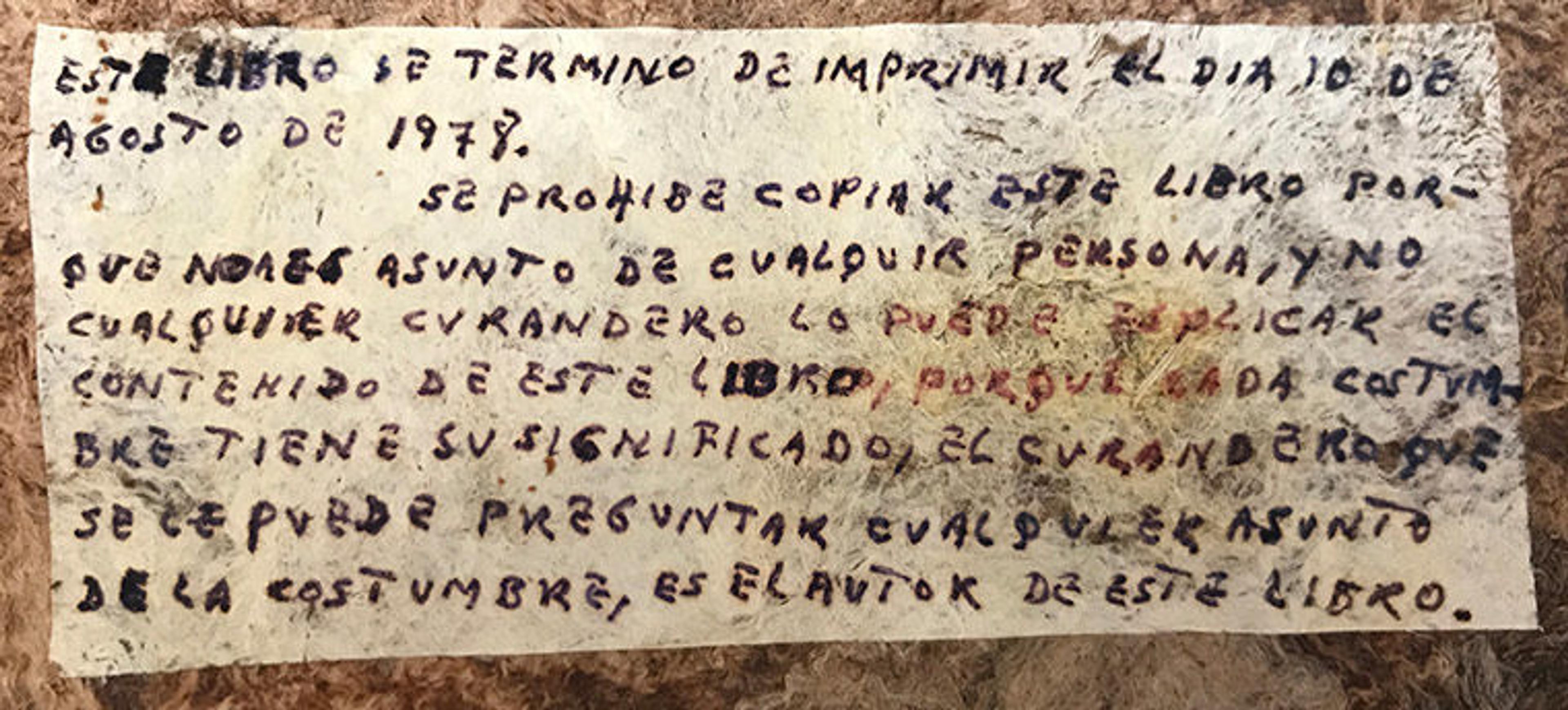
Tellez's copyright statement. The two photos above are from Historia de la Curación de Antigua de San Pablito Pahuatlán Pue[bla] ([Mexico]: Alfonso Garcia Tellez, [1978])
Observant readers will note that García Tellez has produced five different books, and that Watson Library now has three of them, thanks to funds donated by the Friends of Watson Library. Perhaps a benevolent muñeco will help us find and acquire copies of the other two so that we may have a complete set of these truly remarkable manuscripts!
